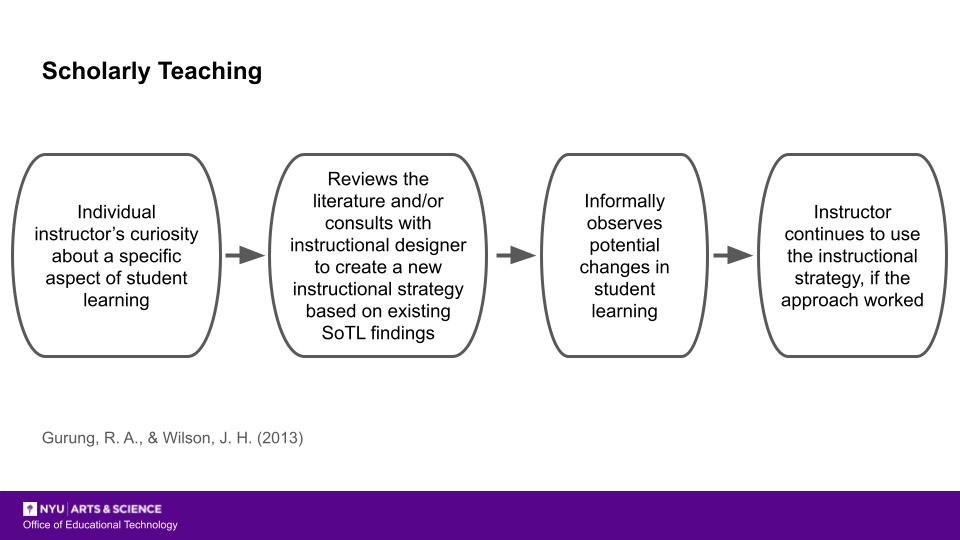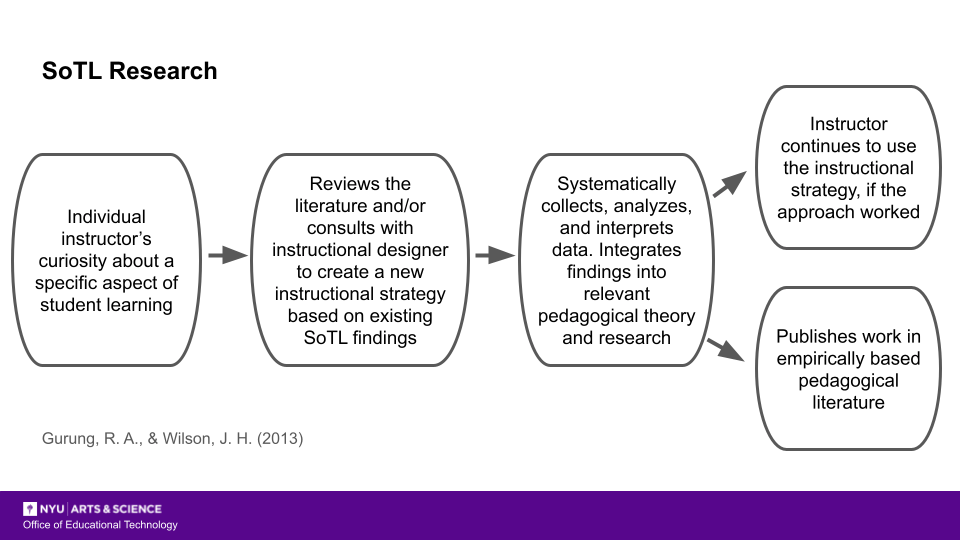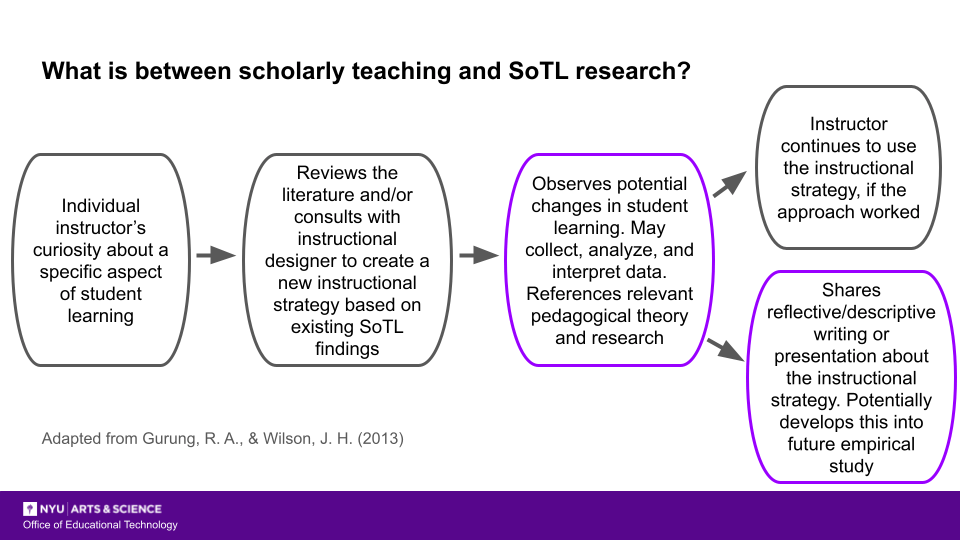The Arts & Science Office of Ed Tech has recently welcomed a number of consultation requests about doing Scholarship of Teaching and Learning (SoTL) projects, which is likely a result of faculty trying new pedagogical techniques upon returning to in person instruction and the transition to NYU Brightspace. These inquiries often involve a faculty member trying out a new instructional strategy, observing its success and wishing to publish a SoTL article on their observations, but finding themselves unsure of where to start.
One of the first texts our office recommends to someone interested in SoTL is New Directions for Teaching and Learning, issue 136, which is essentially a handbook on how to do a SoTL study. The second chapter contains a couple useful visualizations of the relationship between scholarly teaching and SoTL. The first of these shows the familiar process where instructors employ new teaching methods based on their interest in student learning, and then continue using the strategy if they observe its effectiveness.

The second figure shows how SoTL differs from scholarly teaching in that it involves the systematic collection and analysis of student learning data, resulting in publication in a peer reviewed journal.

While these visualizations are helpful for explaining the relationship between SoTL and scholarly teaching, a number of potential SoTL researchers are left to wonder what comes in between informal observation and empirical analysis. The remainder of this New Directions in Higher Education issue outlines a rigorous process of study design that requires a significant time commitment. Since many busy faculty members prefer to write a descriptive or reflective piece about their teaching practice, the requirements of a full blown SoTL study as described in this article might appear onerous. In response to this, our office has encouraged faculty members to write about their teaching in any way their workload permits, which usually falls somewhere between blog post and research study. The figure below is meant to represent this “missing link” between scholarly teaching and a SoTL study.

A major challenge in supporting this kind of descriptive and reflective SoTL practice is finding opportunities for faculty to publish it. The Journal of Interactive Technology & Pedagogy contains sections called Assignments, Blueprints, and Teaching Fails, which provide educators an opportunity to write about their teaching practice in a more reflective manner, while maintaining intellectual rigor. However, based on the research conducted by our office, these kinds of publication opportunities are somewhat rare.
In order to support the full spectrum of faculty who want to document their teaching, our office provides multiple pathways for faculty to engage with our educational technologists, share work with colleagues, and ultimately publish or present their work (the table below outlines these services). For instance, the SoTL page on our website includes this spreadsheet of SoTL related journals and conferences. Our office also maintains a collection of these course design examples, which have been invaluable during the transition to NYU Brightspace. Similarly, our Innovations in Instruction blog highlights innovative teaching strategies we support. Beginning in the Summer of 2020, the A&S Teaching Innovations Awards have provided a showcase of the pedagogical strategies faculty members use to truly engage students in the learning process. Our office is always looking for more ways to support faculty in the development of SoTL related projects and welcomes suggestions for additional programming and support.
